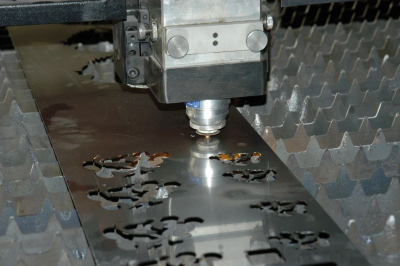Common surface treatments for sheet metal include: powder coating, sandblasting, electro-galvanizing, hot-dip galvanizing, surface oxidation, surface drawing, silk screen, etc. Surface treatment of sheet metal can provide anti-corrosion protection and decoration.

Powder Coating
There are two types of spray paint on the surface of sheet metal: liquid and powder paint. We commonly use powder paint. Through powder spraying, electrostatic adsorption, high-temperature baking, etc., a layer of paint of various colors is sprayed on the surface of the sheet metal to beautify its appearance, and can increase the anti-corrosion performance of the material. It is a commonly used surface treatment method.
Sandblasting
Sandblasting is a finishing process that involves using compressed air to blast thousands of tiny abrasive particles (such as glass or sand) onto the surface of a sheet metal part. The sustained impact of these tiny beads on the metal surface produces a smooth metal sheet surface finish with a matte texture.
Sandblasting is a fairly standard sheet metal finishing process. Also ideal for cleaning or removing paint from finished parts. Sandblasting is a popular choice for visual applications that require a matte quality. As such, it is a common metal finish for aluminum sheets that can be used on parts that require high visual quality.
This process is only compatible with aluminum and titanium metals and is available in three variants: Type I, Type II and Type III.
Type I anodizing involves the use of chromic acid to create a thin layer of sheet metal finish on the sheet metal surface.
Type II anodization creates a strong, corrosion-resistant layer by using sulfuric acid instead of chromic acid.
Type III/Hardcoat anodizing results in a thicker sheet metal finish that is resistant to corrosion and wear.
Superficial Wiredrawing
The material is placed between the upper and lower rollers of the wire drawing machine. There is an abrasive belt attached to the roller. Driven by the motor, the material passes through the upper and lower abrasive belts, and traces are drawn on the surface of the material. Depending on the abrasive belt, the thickness of the traces will also vary. Not the same, the main function is to beautify the appearance. Generally, brushed surface treatment is considered only for aluminum materials.
Silk Screen
There are generally two methods of screen printing various logos on the surface of materials: flat screen printing and pad printing. Flat screen printing is mainly used on general flat surfaces, but if there are deep pits, pad printing is needed.

